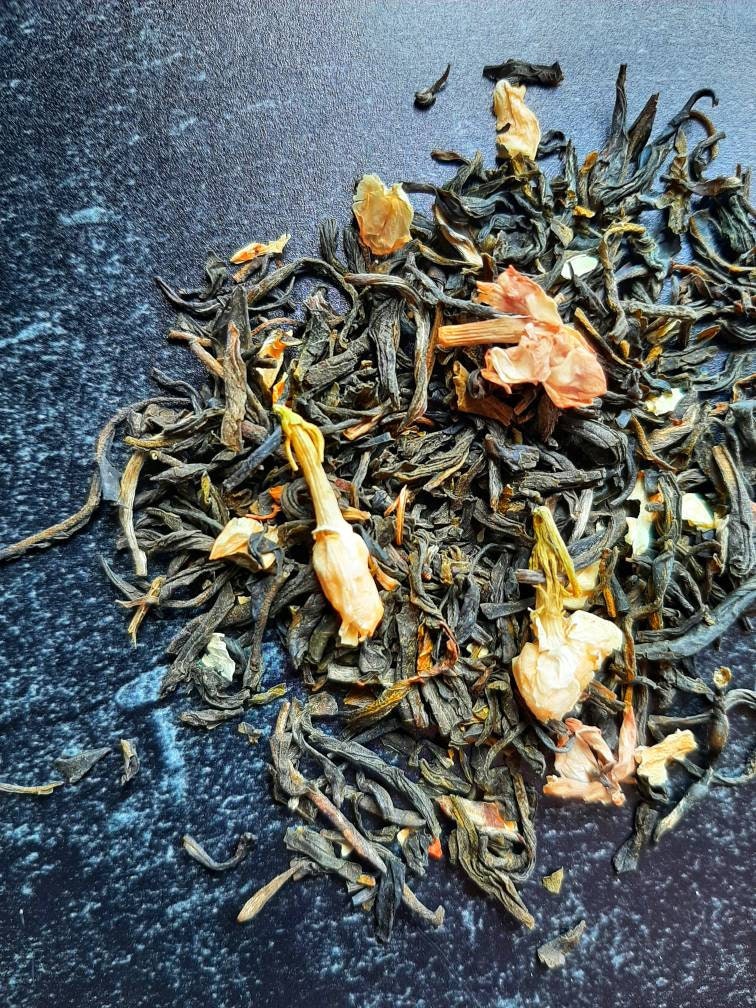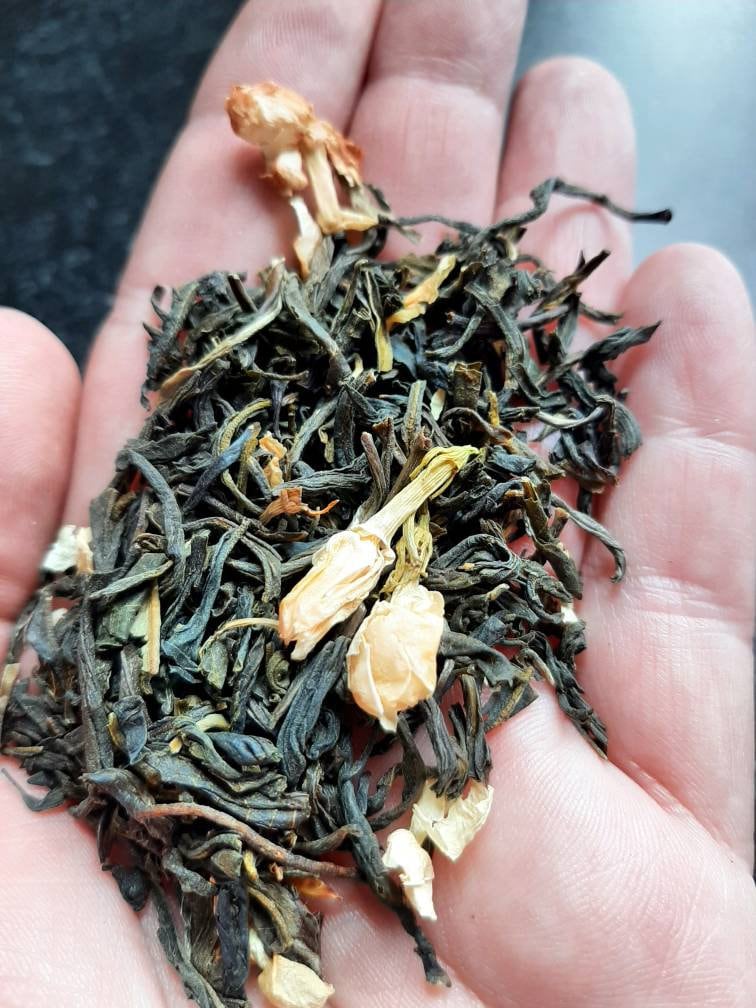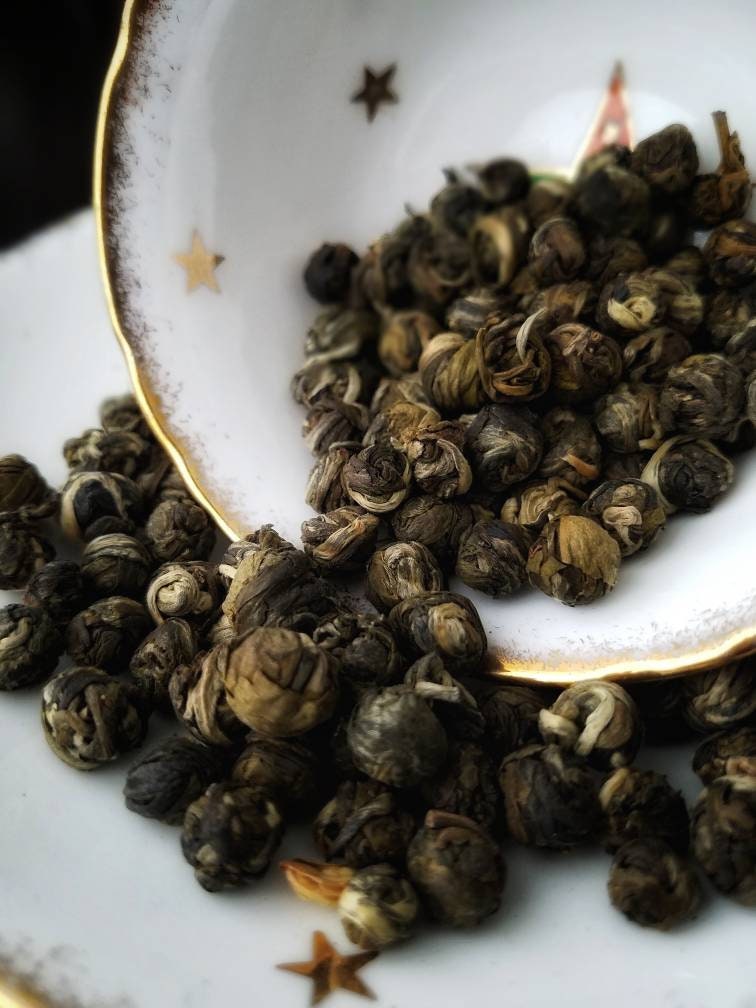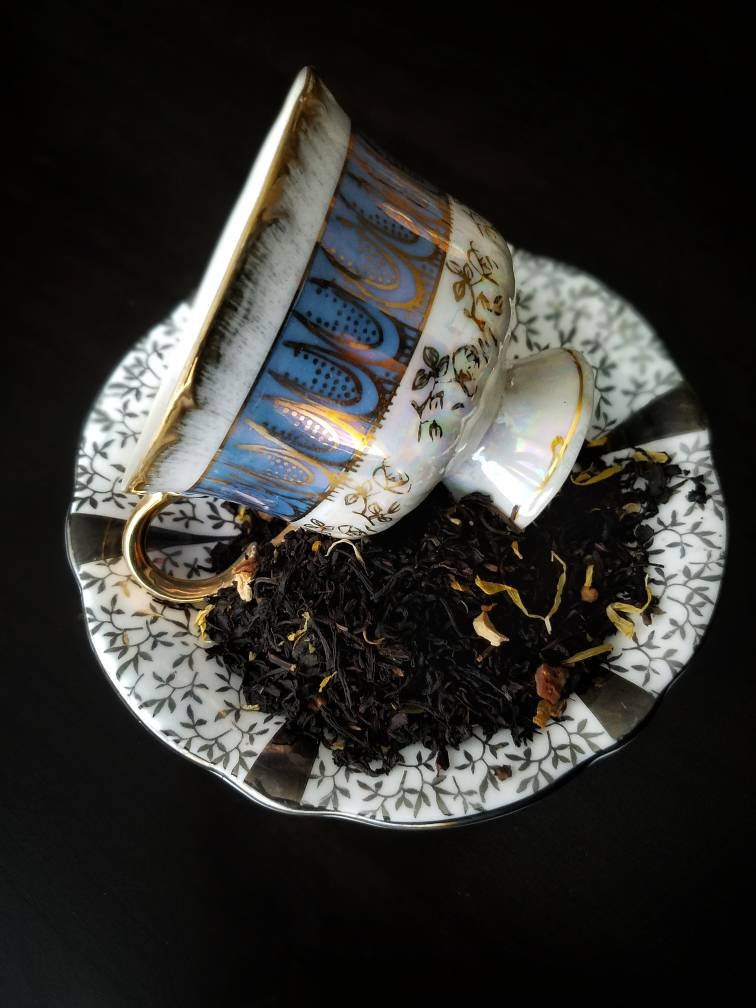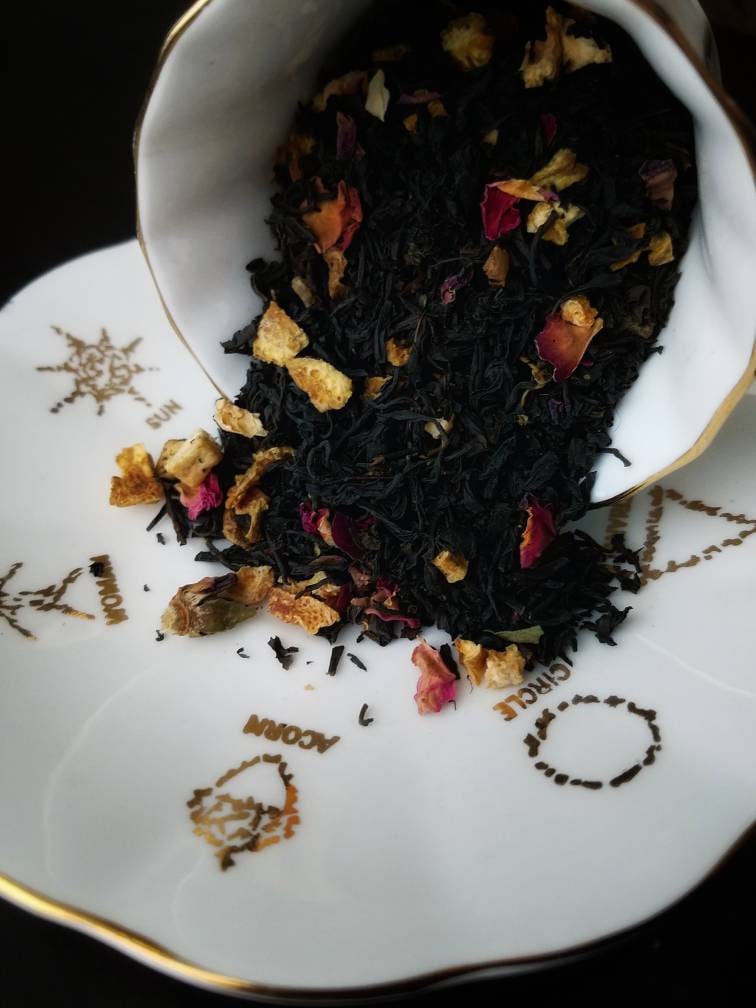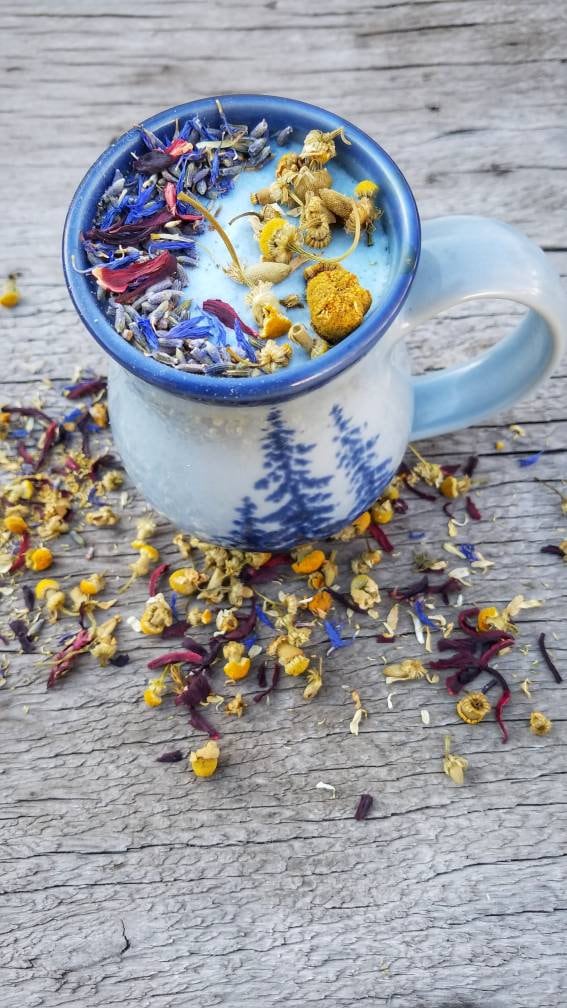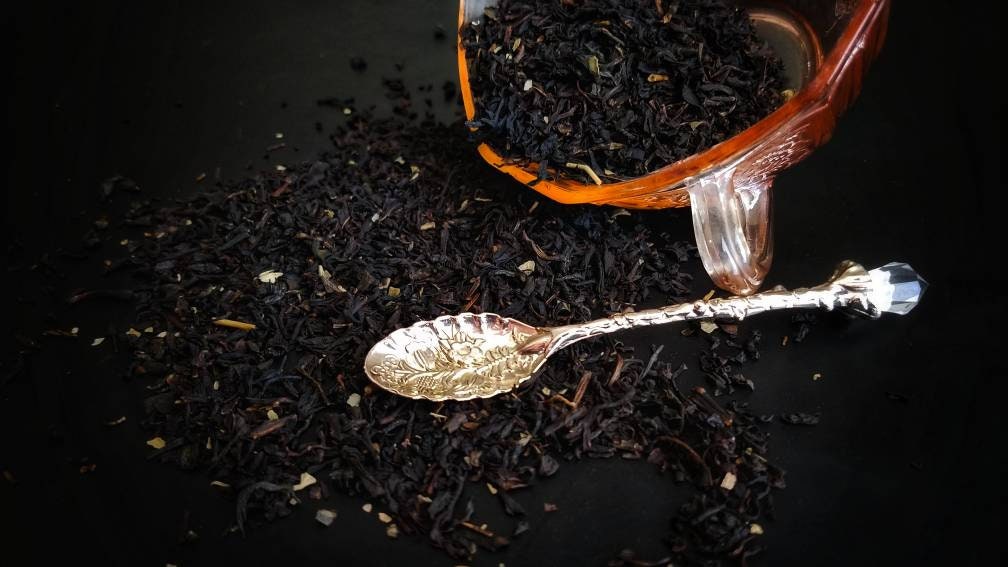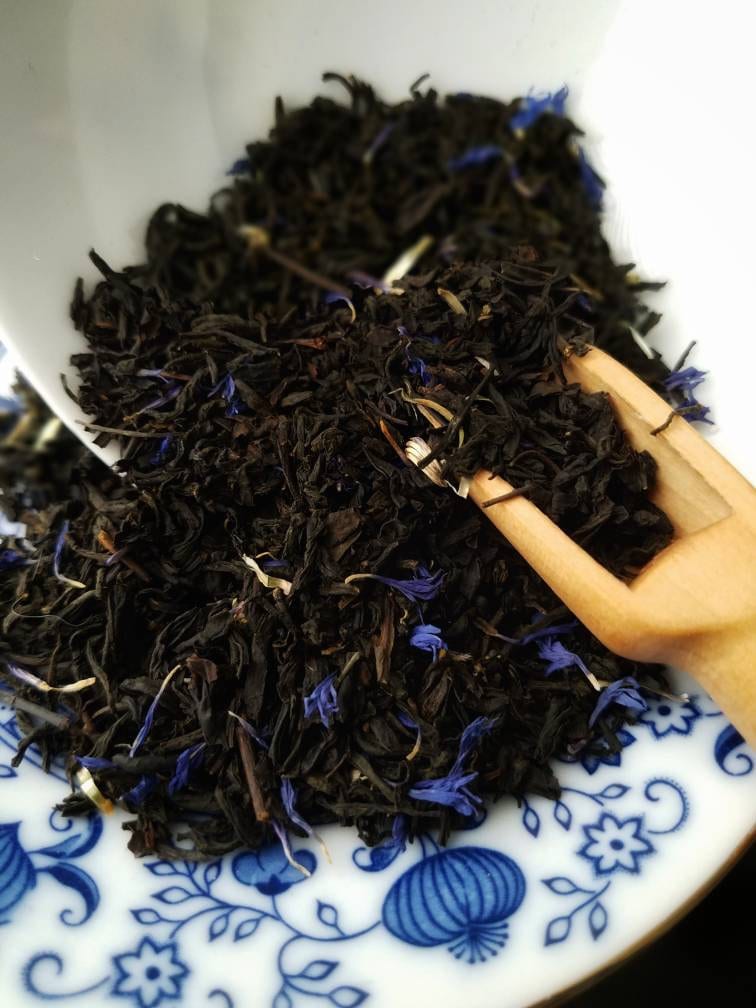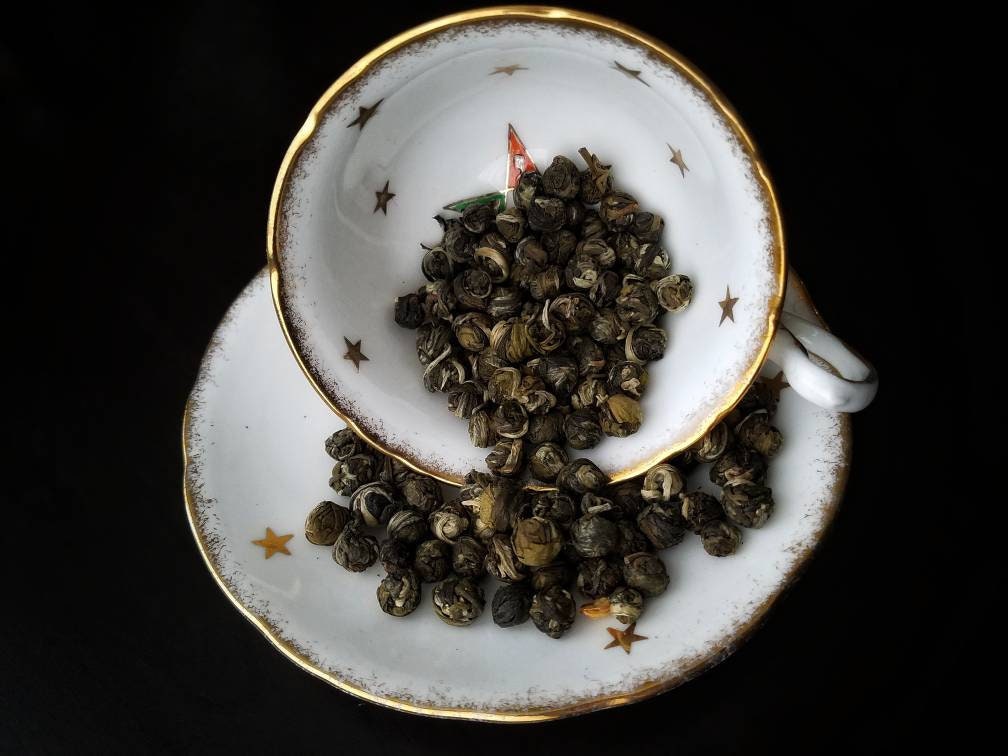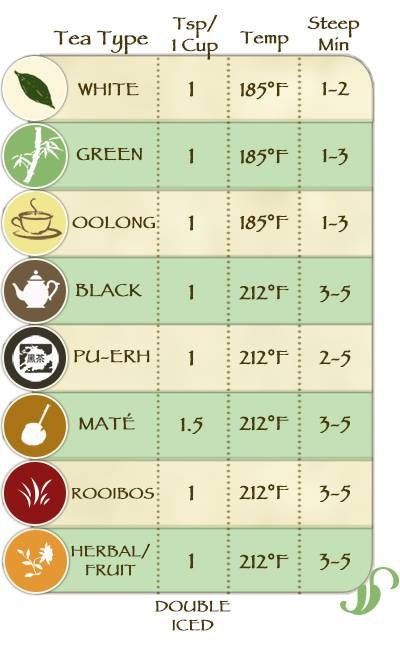My Store
Jasmine Green Tea Twisted Leaf Loose Leaf Tea Blend, Black Tea, Green Tea, White Tea, Tea Sample Set, Gift for Tea Lover, Teas of the World
Jasmine Green Tea Twisted Leaf Loose Leaf Tea Blend, Black Tea, Green Tea, White Tea, Tea Sample Set, Gift for Tea Lover, Teas of the World
Couldn't load pickup availability
Jasmine tea is one of the most famous scented teas in the world. This tea rose to popularity under the Ming Dynasty during a time when flowers were everywhere. Blossoms were depicted on fine China and incorporated into ceremonial and cultural events. It's no surprise that tea masters were able to find a way to spice up traditional tea blends with delicate floral blossoms. Jasmine tea is scented in the same artisanal way as Jasmine Pearls tea, Jasmine blooms are picked and mixed or layered with the harvested tea leaves and then removed after days of absorption.
All sizes are measured by weight in ounces. You will receive 1oz dried tea leaf. Typically, one ounce will make 10-15 cups of tea, depending on how strong you like it.
*All Contain caffeine, with the exception of Rooibos, which is an herb and not derived from the plant Camellia Sinensis
From Fuzhou, the capital and largest city in the Fujian province of China, comes this exquisite Jasmine tea. Most jasmine green teas come from China. Chinese jasmine green teas are generally made using tea leaves from the Fujian province.
The green tea leaves are harvested in late spring when the leaves are the freshest. The leaves are then dried immediately using sunlight, steam, or roasting methods. Green tea leaves that are dried in sunlight tend to have the most delicate flavor. Steaming is the most popular method for Japanese green teas, while Chinese green teas are typically roasted. Steamed green teas develop more vegetal and sweet flavors. Roasted green teas are stronger and feature smoky or toasted notes.
After drying, the leaves are stored until the jasmine flowers are ready for harvesting in mid-June. The flower buds are plucked at mid-day when the buds are closed against the sunlight.
They are then transferred to cool warehouses for scenting the green tea leaves. As the jasmine flowers are subjected to cooler temperatures, they reopen and begin to scent the tea leaves.
Tea leaves are highly absorbent and start to take on a sweet fragrance when they come into contact with the jasmine flower. Once the jasmine blossoms begin to dry, they are replace with new, fresh buds. The scenting process may be repeated up to 10 times depending on the tea master. The leaves and flowers are subjected to drying one final time to seal in flavor and remove moisture.
Jasmine green tea should be brewed with hot water, not boiling water to prevent bitter flavor. Brew jasmine green tea with water between 160 to 180 F.
You can also bring water to a boil and allow it to cool for 2 minutes before adding in the tea leaves.
Green teas steep best when the heat remains in the cup. Use a lidded tea cup or mug to keep all the heat inside the vessel when steeping.
You can also place a small plate on top of a normal mug to seal in the heat and moisture during steeping. Steep jasmine green tea for 2 to 3 minutes.
If you're transitioning from tea bags to making tea with loose leaf tea, this listing is for you.
Your one stop tea shoppe!
“The journey of a thousand cups begins with a single sip” -Steve Schwartz
Enjoying the process of preparing your tea can be part of your daily ritual; taking a few moments to heighten your senses and enhance your tasting experience. Enjoy your tea and allow your taste buds to unfold the unique characteristics within your cup. Most teas can be re-steeped multiple times
Water temperature, the volume of tea leaves, and steeping time are all part of the art of brewing tea. Different compounds are extracted at different rates depending on water temperature and steeping time.
Green teas do better with shorter brewing times and lower water temperatures. Most green teas and greener oolong teas taste best when brewed at temperatures 30° - 40° F below boiling point (180° - 170°F).
Water temperature that is just below boiling (212°F) is ideal for black tea and oolong tea. Green tea is more delicate and requires a more delicate temperature.
Measure volume in weight instead of teaspoons for best results: 2 - 2.5 grams for a 6-ounce cup is ideal.
Hot tea brewing method:
1 teaspoon/6-8oz
Add heated water. Cover and let steep for 3-7 minutes according to tea and taste.
Iced tea brewing method: (to make 1 liter/quart): Place 6 teaspoons of tea into a teapot or heat resistant pitcher. Pour 1 1/4 cups of freshly boiled water over the tea. Steep for 5 minutes. Quarter fill a serving pitcher with cold water. Pour the tea into your serving pitcher straining the leaves. Add ice and top-up the pitcher with cold water. Add milk, sugar according taste.
Tea was discovered in its greenest form over five thousand years ago.
For centuries, all tea was green tea. Green tea is simply the leaves of the camellia sinensis plant placed to steep in hot water.
Black tea is the most popular tea in the world.
There are four types of true teas including white tea, green tea, oolong tea, and black tea.
All four types of true teas are derived from the same exact plant species – Camellia sinensis.
The difference in these teas arises during the production process. Some teas are oxidized while others are simply sun-dried. These minor differences result in big flavor and color differences.
China is the birthplace of black tea, which in China is called, perhaps more appropriately, hong cha – red tea – after its the red colored tea it usually produces.
Black tea is usually graded on one of four scales of quality. Whole-leaf teas are the highest quality, with the best whole-leaf teas graded as “orange pekoe.” After the whole-leaf teas, the scale degrades to broken leaves, fannings, then dusts.
Whole-leaf teas are produced with little or no alteration to the tea leaf. This results in a finished product with a coarser texture than that of bagged teas.
We hand make all of our products to order in small batches to ensure optimal freshness, consistency, and potency. Our products are not made to sit on store shelves for extended amounts of time. Dried tea blends can last many years if sealed in an airtight container, and stored correctly (in a cool, dry, and dark place.) UV light offers the biggest threat to dried herbs and tea leaves, as prolonged sun exposure can turn leaves pale and zap them of their potency, aroma, and taste. Tea and other dried herbs don’t go bad, but will lose potency over time. If you notice these characteristics, or if tea herbs have turned pale, scentless, and flavorless, it’s best to discard the product. Always store your natural botanicals in cool, dry, and dark places as light and heat can effect the product quality and potency.
*These statements have not been evaluated by the Food and Drug Administration. This product is not intended to diagnose, treat, cure or prevent any disease.
Disclaimer - This information is for educational purposes only. It is not the intent of this website to dispense medical advice. Consult a doctor before using if you have any health conditions or concerns. Discontinue immediately if a reaction occurs.
